Jaguar XF P300 review: revitalised luxury at a surprisingly low price

The Jaguar XF has been with us in second-generation guise since 2015. That’s a fairly long time in the automotive world – and while we don’t have an all-new model for 2021, we do have a comprehensively revised version that aims to rejuvenate a car that has long played second fiddle to the BMW 5 Series, Audi A6 and Mercedes-Benz E-Class.
The big news is an all-new interior, which aims to be leaps and bounds better than the disappointingly austere original. Jaguar has tweaked the exterior too, with a facelifted nose and ‘double-J’ LED headlights. Engines have been updated and streamlined, while plug-in hybrid versions are on the way.
In a move to make it easier to buy online, the number of variants and options has been halved. There’s a basic price-leader S, but the rest of the range has the sporty R-Dynamic pack as standard, in either S, SE or HSE guise. Compared to its German rivals, the XF is now a bit of a bargain, with prices starting from £32,585 instead of nearer £40k.
Here, we’re testing the petrol-powered XF P300 R-Dynamic SE saloon, which is yours for £41,850. That already compares extremely well to the £42,770 you need for a BMW 520i M Sport with almost 50 percent less power. Can the rest of the 2021 Jaguar XF measure up?
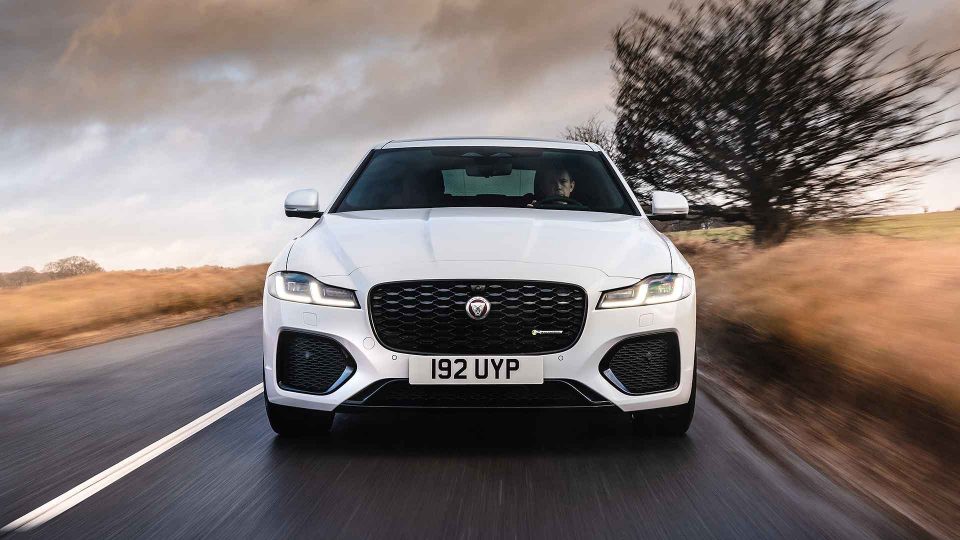
The more aggressive front end of the 2021 XF gives it extra attitude, particularly in the Yulong White of my test car, finished off with a black pack. It’s less fresh at the rear, but still different; the real surprise comes when you open the door.
The interior has been transformed. It’s a magnificent makeover, replacing something half-finished with a truly premium-grade cabin that’s genuinely appealing both to look at and to touch.
The new Pivi Pro infotainment is the centrepiece, with a generously-sized screen that nudges Tesla Model 3 proportions. The screen is bright and impressively rich in resolution, and the system itself is swift, responsive, crisp and clear to use. Jaguar in class-leading infotainment shock? It could be: that’s how good this system is.
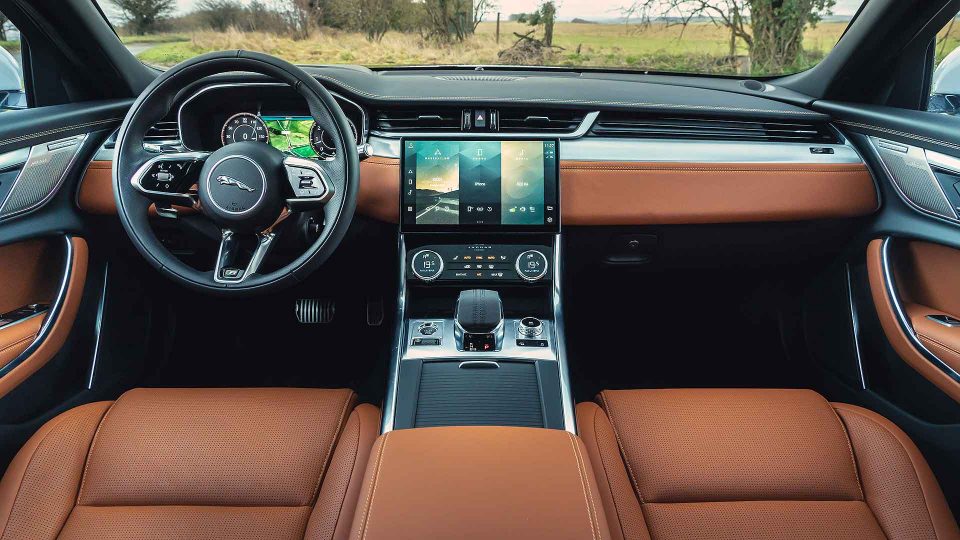
The naff materials of the previous XF have gone, and in their place are trims far more befitting of a luxury car. The attention to detail is superb, with touch-points such as the door handles, the steering wheel, the ‘black panel’ climate and door mirror controls, and even the new metal-finish electric window buttons all leaps and bounds ahead of before.
My test car had beautiful Siena Tan leather, which was soft to the touch and, to look at, knocking on the door of Bentley-level craftsmanship.
I also love the ‘Jaguar’ labels on the seats, like those to show off with on posh clothing, and the ‘Est 1935 – Jaguar – Coventry’ moniker on the centre console is a nice way to celebrate the firm’s rich heritage.
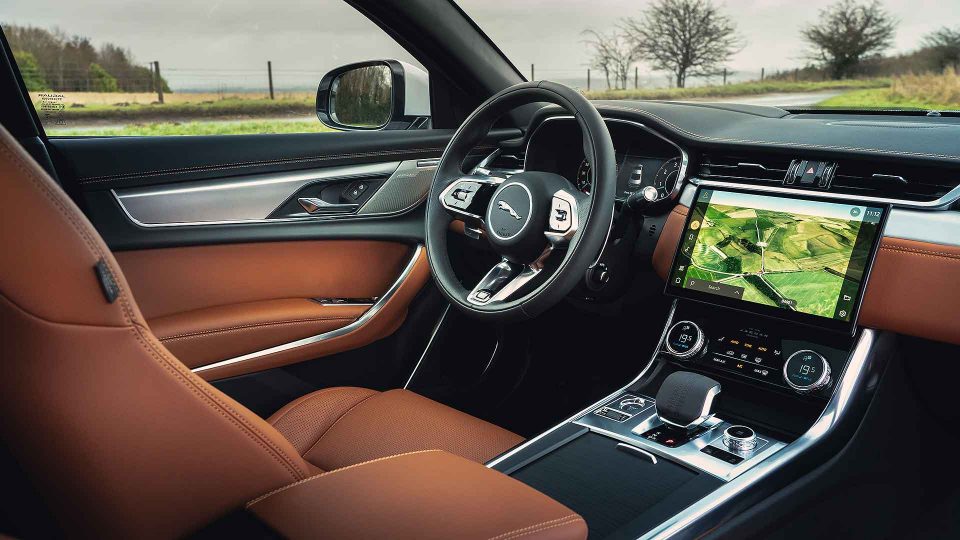
Compared to the hunkered-down Jaguar XE, the XF has a high seating position. You look loftily down the bonnet (and its power bulge), and feel quite regal inside. The seats aren’t squidgily over-bolstered, but they’re comfy, and the rear seat is extremely supportive and generous.
OK, space beneath the front seats is a slight squeeze, and thick sills make getting in and out a bit awkward, but there’s enough space to get comfy, and the sheer comfort of sitting back there really is executive-grade.
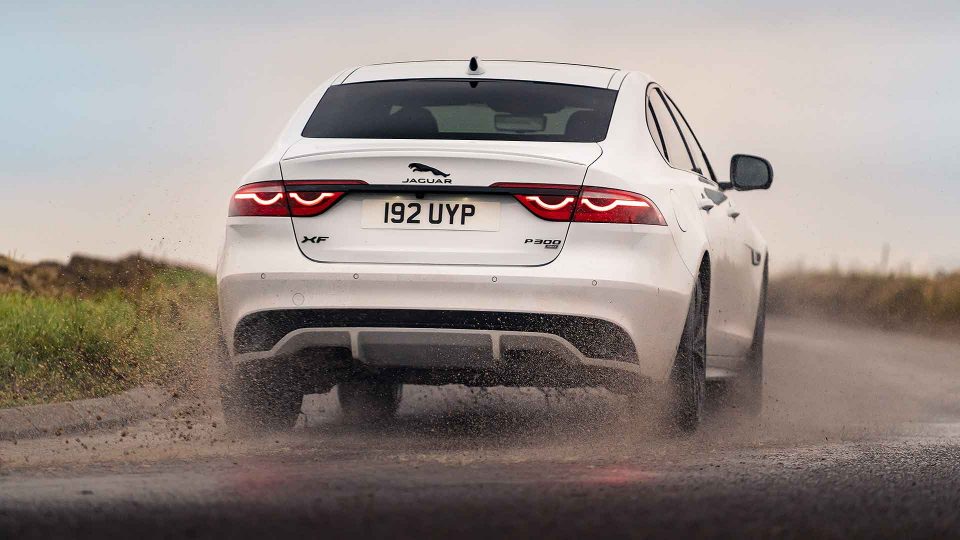
The 2.0-litre turbo four-cylinder Ingenium engine (also found in the latest Jaguar F-Type) is a little vocal and throbby at low revs, but it revs through very smoothly and more quietly, with a neat boosty bark. With 300hp, it’s swift – 0-62mph takes 6.1 seconds – and all-wheel drive gives confident traction in wintry weather.
The 2021 XF features tech that’s fairly new to the auto industry: active road noise cancelling. Within a mile, it’s apparent how effective this is. It turns the usual row you get from the tyres and road surface into a distant whoosh, which feels very luxurious. It’s not totally silent, but is far smoother-running and, in this regard, lifts an executive car into the luxury car class.
It even dampens down the thud and bump you get when 20-inch alloy wheels hit potholes. This, in turn, somehow makes the ride itself feel smoother and less sudden. I genuinely was surprised at how effective it was.
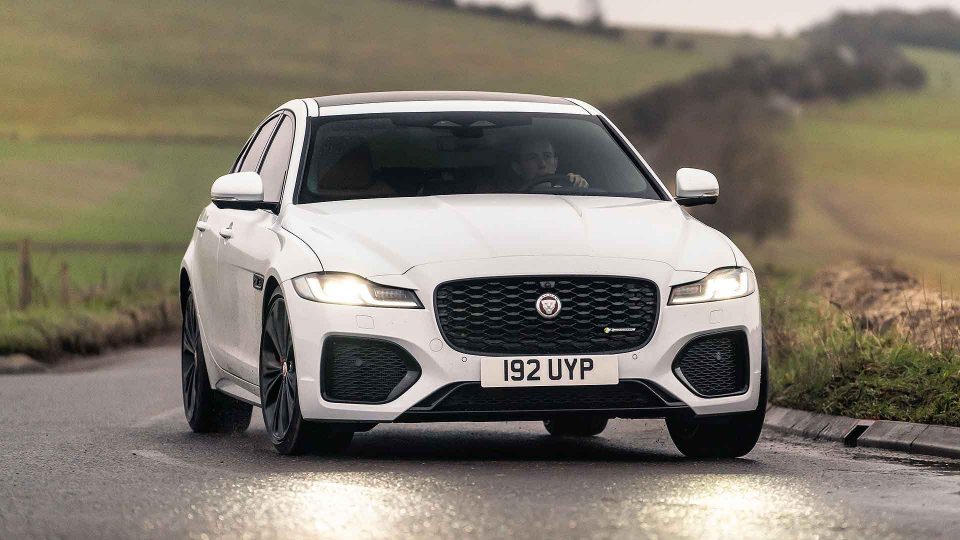
Of course, Jaguars always have suspension that expertly blends a nice combination of sporty handling and comfortable ride. The XF is biased towards comfort, soaking up standard British roads with assurance, but without feeling like a soggy soft carpet.
And yet it handles beautifully. Remember, this is a soothing executive car, but the XF’s positivity and confident agility is seriously impressive. It handles with a natural, relaxed ease, flowing across challenging roads without ever feeling sudden or surprised by what it encounters.
The steering is nicely weighted and has a good sense of connection, while the obvious integrity of the aluminium-intensive architecture also feels reassuring. This isn’t a leaden car built to remain totally unperturbed at 130mph on German autobahns, but one created to work well on sinuous switchback country roads. It’s a high-end drive that genuinely rewards.
On a five-mile stretch of broken-surface A-road, the sort that connects motorway to mid-morning boardroom meeting, the XF’s wonderfully damped ride, surging drivetrain and hushed overall noise levels came together and gave a drive easily up to the newfound high standards of the transformed interior. It really was a surprising standout few moments.
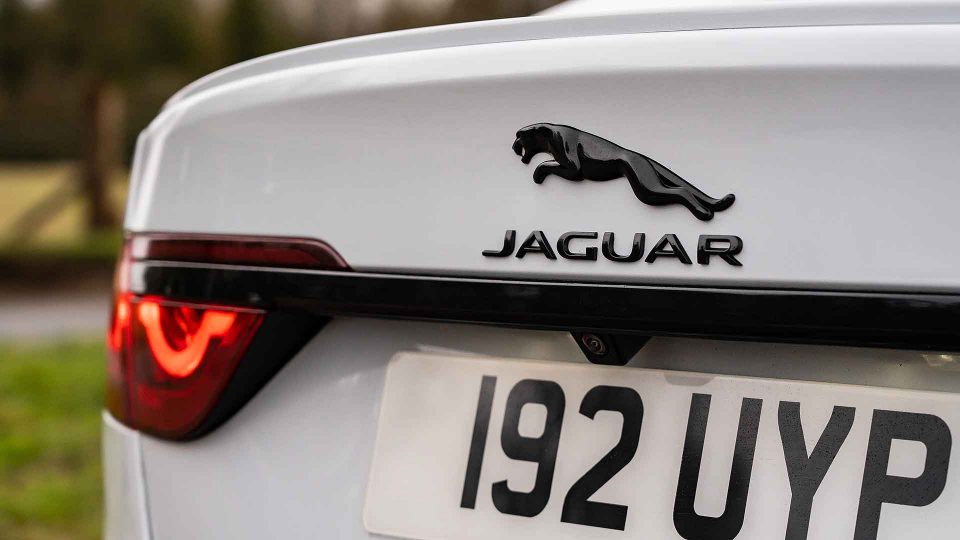
The Jaguar XF almost deserves to look more different than it actually does. Because the familiar exterior conceals a car that has finally come together. Six years on, it’s at last a flaw-free alternative to its German and Swedish competitors.
And the counterargument for it not looking more different? Prices that are now outstandingly competitive. The Jaguar XF experience is up to scratch in all the areas that matters, and you may actually choose it because you prefer the interior, or the drive, over its rivals.
That you’ll be paying so much less for the privilege simply underlines what a good job Jaguar’s done at keeping the XF fresh.
Richard Aucock writes for Motoring Research
PRICE: £32,585 (£41,850 as tested)
0-62MPH: 6.1 seconds
TOP SPEED: 155mph
MPG COMBINED: 32.9
CO2 EMISSIONS: 193g/km